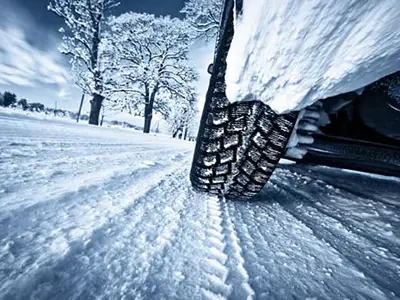
With the onset of autumn cold, every responsible car owner should ensure their vehicle is fully prepared for winter in advance, as timely and proper maintenance can prevent numerous road accidents during the most challenging time of year. Automotive safety experts unanimously agree that comprehensive preparation not only helps avoid unexpected breakdowns that can leave you stranded on the side of the road in snowstorms and freezing temperatures, but also significantly extends the overall lifespan of all key components and systems in your vehicle, making every winter trip as predictable and safe as possible for you and your passengers.
The most obvious and critical step is promptly replacing summer tires with winter tires. The optimal time for this change is considered to be when the average daily temperature consistently drops below 5 to 7 degrees Celsius. If the temperature at night begins to approach freezing, further delay in replacing tires can be downright dangerous. Equally important is checking the level and condition of all operating fluids, including engine oil, antifreeze in the cooling system, and halogenated fluid. Engine oil should be changed according to the maintenance schedule, antifreeze should be replaced every two years or sooner if visibly cloudy, and halogenated fluid is also hygroscopic and loses its properties over a similar period of time.
The battery deserves special attention. Its actual capacity naturally decreases in cold conditions, while the overall load on the vehicle's electrical system increases significantly due to the constant operation of the heated windows, mirrors, interior, and seats. Therefore, before the onset of winter, it is necessary to check the battery's actual charge, thoroughly clean all terminals of any possible oxidation, and, if necessary, fully recharge it with a stationary charger or even consider replacing it with a new one if its lifespan is almost exhausted. It's also crucial to conduct a detailed diagnostic of the entire brake system, including a visual inspection of the pad and disc thickness and a check for brake cylinder leaks. Braking performance on icy or snowy roads is an absolute priority. The final step in preparing the chassis is a proper wheel alignment to ensure perfect directional stability.
Don't forget about seemingly minor details like the condition of your windshield wipers and the quality of your washer fluid. Winter chemicals, combined with constant dirt, quickly damage air filters, and using summer water in the washer reservoir will inevitably lead to system defrosting. Therefore, it's important to purchase high-quality antifreeze in advance, avoiding dubious counterfeits, and test its performance in real-world cold conditions. This comprehensive and thoughtful approach to preparing your vehicle is guaranteed to save you from numerous problems and unexpected expenses, allowing you to confidently face any winter weather and enjoy comfortable and safe driving even in the most severe frost or snowfall.

